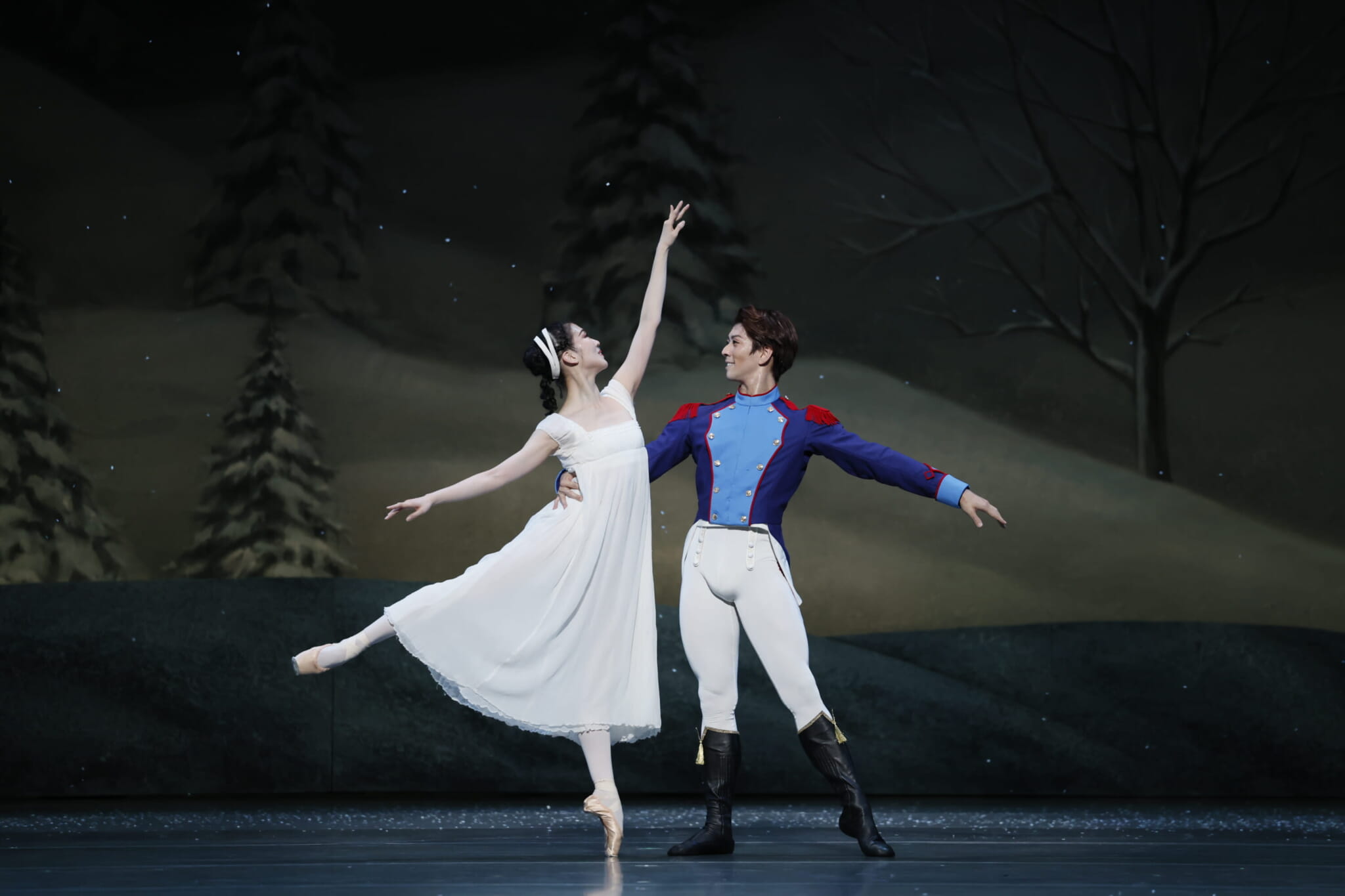There are just some things that go together: peanut butter and jelly, Bonnie and Clyde, The Nutcracker and Christmas. “Dance of the Sugar Plum Fairy” is added to holiday playlists and the famed ballet is scheduled in theaters globally. The National Ballet of Japan is no exception, as it is showing this classic ballet at the New National Theatre Tokyo (NNTT). Originally premiering as a new production in 2017, NNTT’s rendition of The Nutcracker and the Mouse King was choreographed by Royal Ballet alum Wayne Eagling, making for a spectacle with fast-paced choreography that leans into the mischievous humor of the magical story.
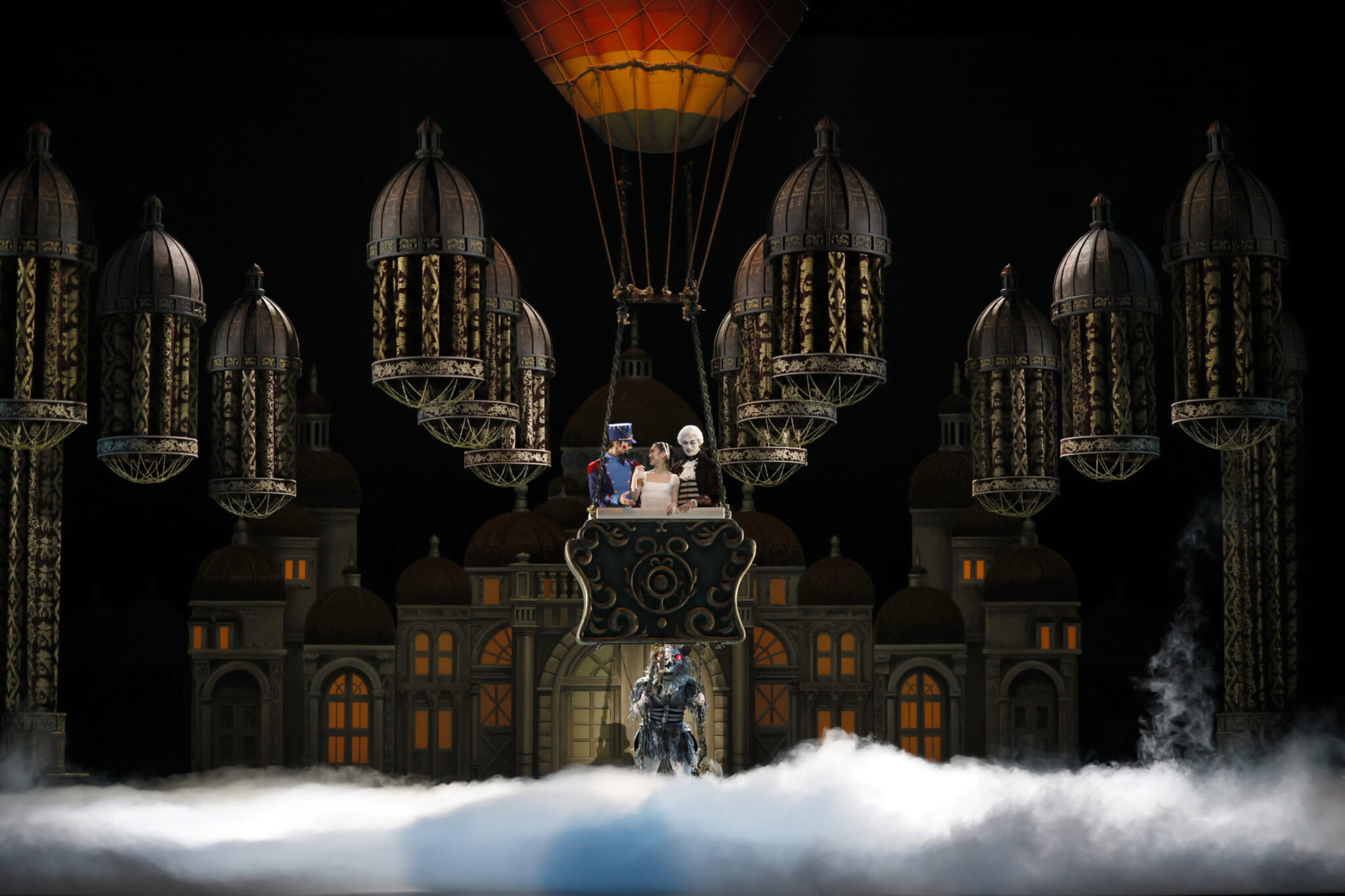
Courtesy of NNTT. Photo by Hidemi Seto
Enter the Magical Mind of a Clara
The production itself is a feat. It accomplishes everything The Nutcracker and the Mouse King sets out to do and more, plunging you headfirst into the mind of a child with all its expansive imagination and creative whimsy. The show begins with Clara and her family getting ready for the party, with a barely-there screen between the audience and the dancers. As soon as the grandfather clock strikes midnight and Clara’s dream sequence begins, the screen is lifted and the stage saturates in technicolor, sucking the audience into a heightened sense of immediacy. Its effect is palpable – the dream world feels more real to us than “reality.”
The set design is classic yet bold. From an actual ice skating rink on-stage in a European winterscape straight out of a snowglobe and an expanding Christmas tree, to the hot air balloon that lifts off to a faraway castle in the Kingdom of Sweets, your eyes will certainly always have something to marvel at.
Then of course, there’s the ballet. If you’re at all familiar with The Nutcracker and the Mouse King, you probably already have a favorite scene (I’m partial to “Waltz of the Flowers” and everything that involves the somehow charming mouse king), but every piece is performed with such finesse of exquisitely fast-paced choreography, that you may grow to find a new favorite from this production.
Saho Shibayama, who performed Clara on the Christmas Eve matinee show, is a scene-stealer. The pas de deux she performs with Shogo Hayami immediately after the battle scene is surprisingly romantic and passionate after a prolonged sense of childlike wonder. The New National Theatre Tokyo’s The Nutcracker and the Mouse King brings Christmas in Europe all the way to Tokyo and reminds us to embrace wholeheartedly the magic that is Christmas.
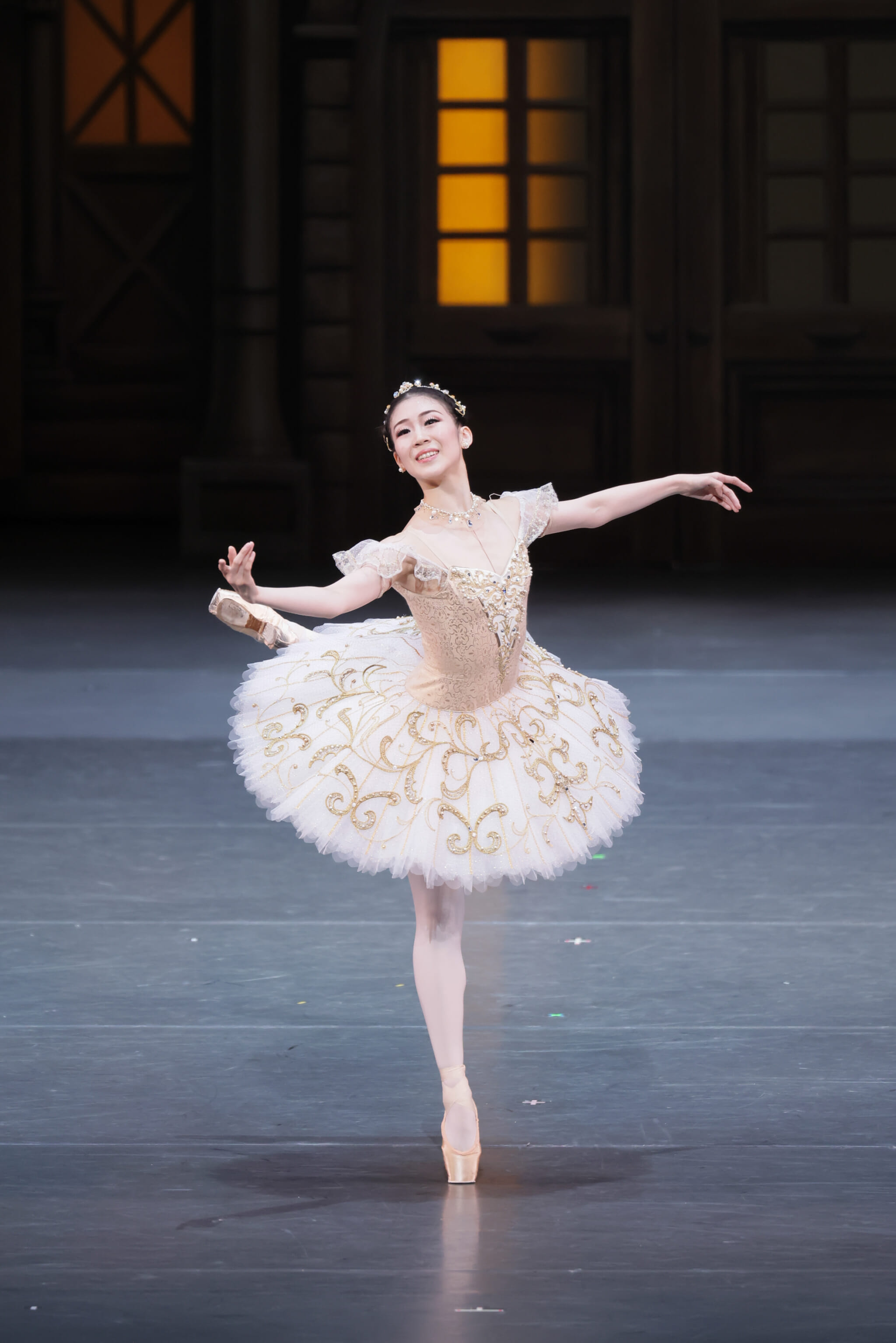
Courtesy of NNTT. Photo by Kiyonori Hasegawa
Exclusive Interview with Saho Shibayama
Prior to the show, TW got a chance to speak with Saho Shibayama, one of The National Ballet of Japan’s principal dancers for the 2023/2024 season. Entering the troupe in 2014 as a soloist, and studying both in the U.S. and Japan, Shibayama’s repertoire and experience is extensive, to say the least. From Odette and Cinderella to Kitri she’s done it all, and she’s wrapping up the year with the role of Clara in the Christmas ballet.
Congratulations on becoming a principal dancer at The National Ballet of Japan earlier this year! How do you feel about your new role within the company?
I was so surprised to become a principal this season, I sometimes wonder if I’m dreaming. At the same time, I feel the responsibilities of being a principal. I’m trying not to give myself any unnecessary pressure, though. My day-to-day life hasn’t changed drastically, and I keep doing what I’ve always done.
Besides Clara, what roles have you really enjoyed?
It’s really hard to pick one, but Cinderella was really memorable to me. The costume actually came from the Royal Ballet and famous ballerinas have written their names on the inside of the costume. It’s mind-blowing to know you’re wearing history.
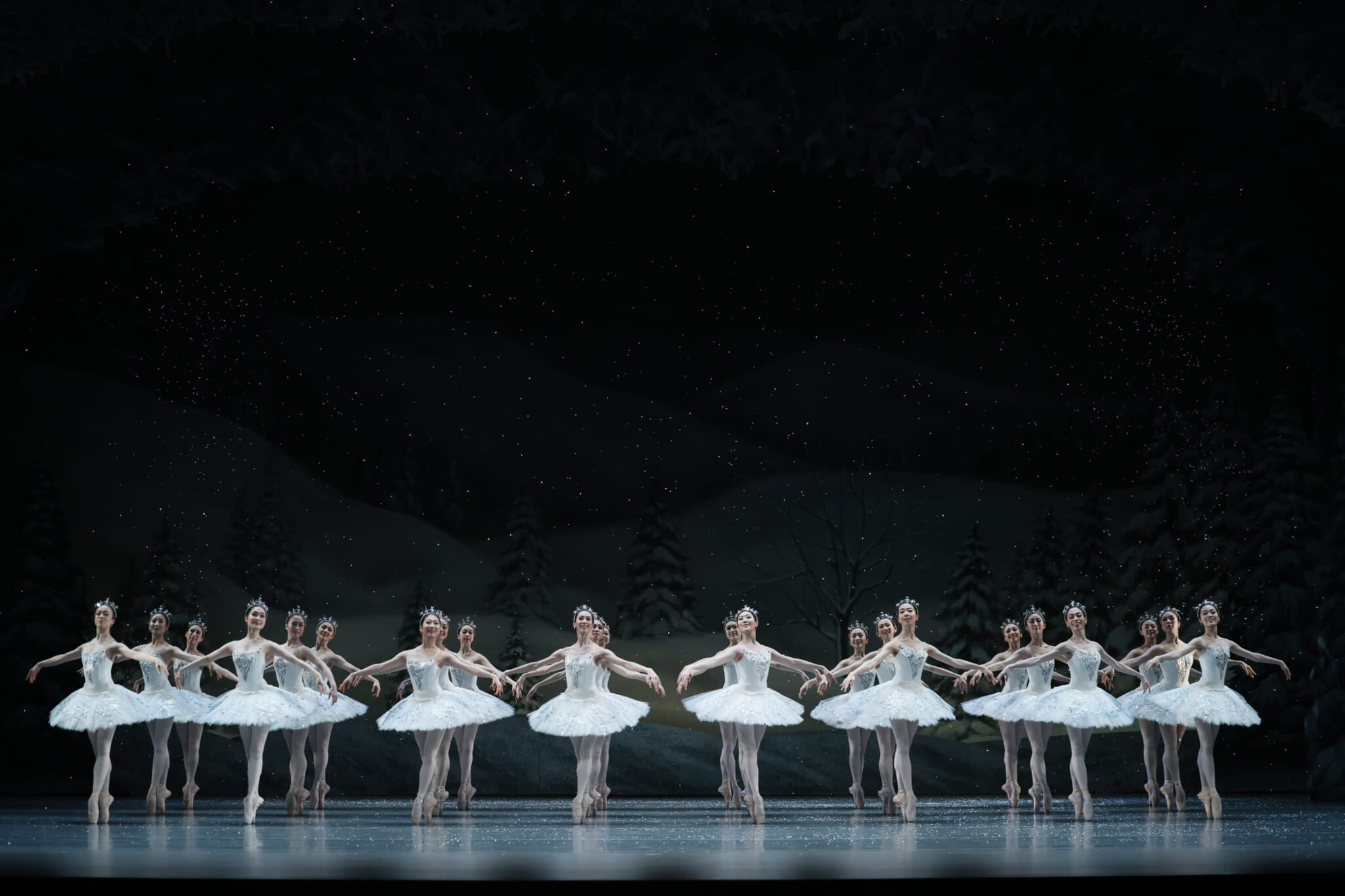
Courtesy of NNTT. Photo by Hidemi Seto
Do you have any special memories of The Nutcracker?
I mean, it’s such a classic and I’ve been performing it since I was a little girl. I remember being really excited to get to dance with a doll on stage in a recital.
What do you think is special about The Nutcracker?
It’s a show that happens every year, but it’s a show that’s fun for all ages. When you’re little, you might find the mice or the big Christmas tree exciting, but as you grow older you might find the snow scene or the divertissement in Act Two the highlight.
What’s special about coming to see the ballet this time of year?
Since The Nutcracker is so well-known, even people who know nothing about ballet will probably know at least one piece of music from the show. I’m hoping that the audience has a magical experience and leaves the theater wanting to see another show. Also, a lot of guests who come to see our performances around the New Year wear kimono, which I think is a very unique sight.
What’s different about studying ballet in Japan and the U.S.?
In Japan, instructors are very detail-oriented and thorough in their teaching. For better or for worse, I found myself becoming a perfectionist, and was afraid of failure. I have found that in America, instructors are more positive and easy-going. When I would beat myself up for making a mistake, my instructors in the U.S. would cheer me up by pointing out where I had succeeded. Studying abroad, I was able to work through some mental blocks I had developed, and grew to express myself more dynamically. I now try to balance the best parts of both teachings in my performance.
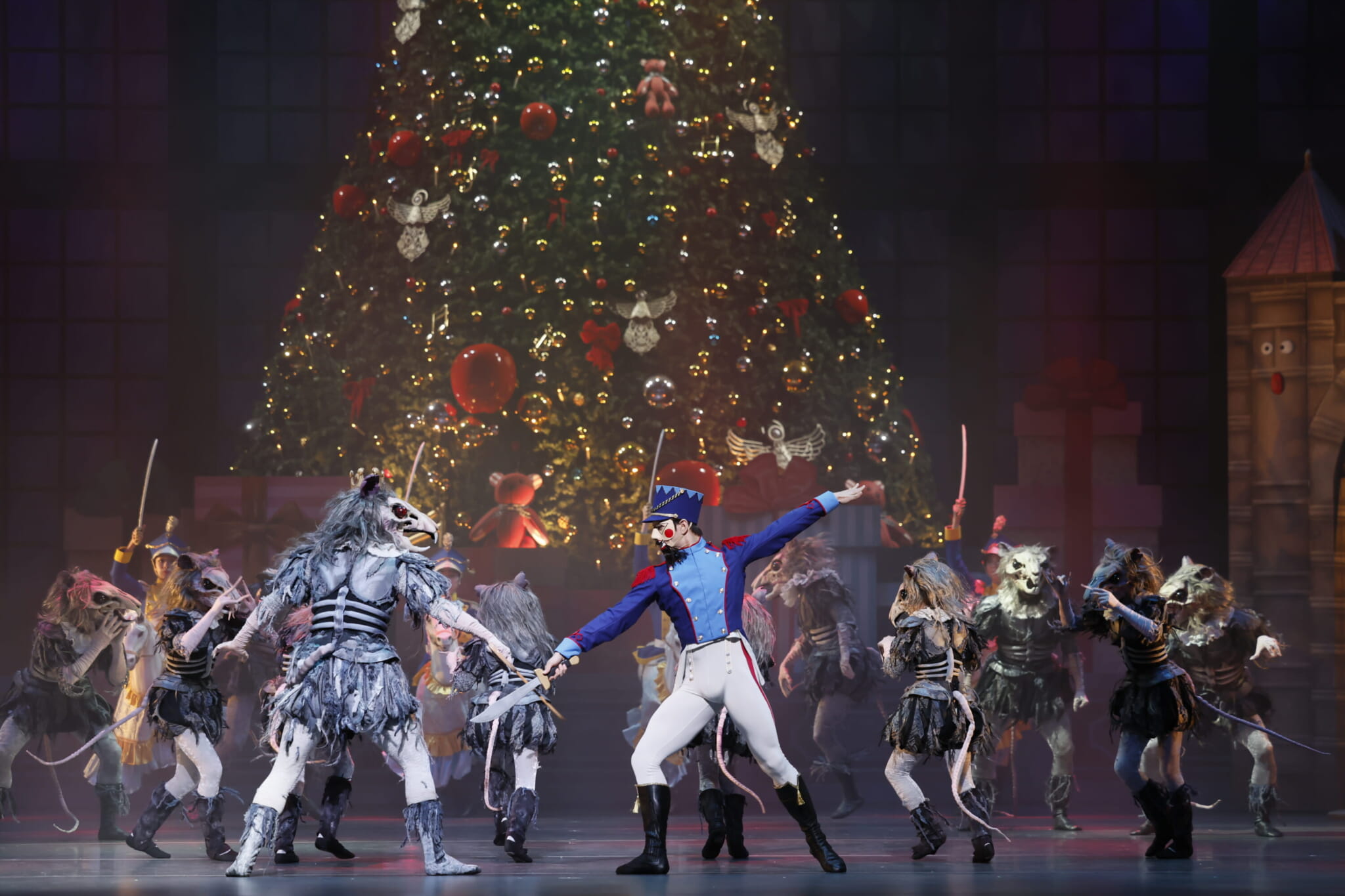
Courtesy of NNTT. Photo by Hidemi Seto.
How was it working with Wayne Eagling?
I worked with Wayne back in 2017 when I was cast as Spanish Dance, but his choreography is really difficult in that there’s a lot of choreography per count. He, himself, is such an amazing dancer, and he’s able to dance perfectly the choreography the rest of the dancers really struggled with. But he’s incredibly kind, and would actually do the choreography himself while he’s teaching us.
How is it different working with Japanese vs foreign choreographers and directors?
It’s not really about nationality. I think everyone is just so different. As talented artists, the choreographers and directors have quite strong personalities. Back when I worked on Frederick Ashton’s Dream, I worked with Christopher Carr (Guest Principal Ballet Master of the Royal Ballet) who would count really loudly during rehearsals. He was so impassioned, I started to hear his voice on stage, especially during the pas de deux. As soon as rehearsals ended, though, he was such a quiet person. His energy and passion really empowered us to push through even the most difficult of choreography.
What are the highlights of this rendition of The Nutcracker?
So many! I can’t wait for you to see it, but the battle scene has a lot going on. The huge Christmas tree gets even bigger, so Clara and the audience become really small in comparison, basically at the same eye level as the mice. The snow scene’s pas de deux is one of my personal favorites, it’s so sweet and romantic and different from the rest of the show. Then there’s the divertissement from many different countries in Act Two. I hope everyone in the audience can find their own favorite scene, like a treasure hunt.

